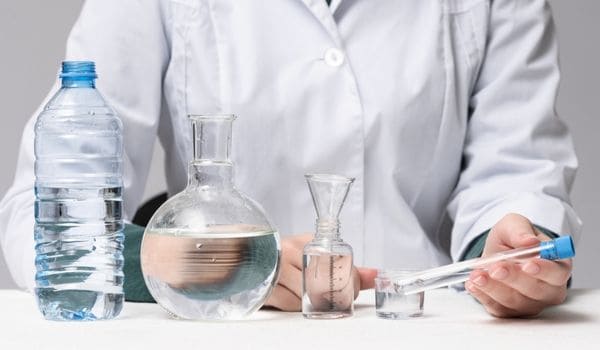It’s easy to confuse a water filter with a softener — and many people do. While both improve water quality, they solve very different problems. One targets contaminants. The other deals with hard water. So if you’re wondering which one you need — or if it’s both — this guide will walk you through the difference in plain English.
We’ll break down how each system works, when you need them, and how to choose based on your water type.
✅ Key Takeaways:
- Water filters remove harmful contaminants like lead, chlorine, and pesticides — they do not soften water.
- Water softeners remove hardness minerals (calcium and magnesium) that cause scale buildup and skin irritation — they don’t filter toxins.
- If your water smells, tastes bad, or causes buildup on faucets, it’s worth testing for both contaminants and hardness.
- You might need both systems — and yes, they can work together.
- Always test your water before buying equipment. It’ll save you money and guesswork.
🔍 What’s the Real Difference?

Both systems improve your home’s water quality — but they’re designed for different jobs.
- Softeners target hard minerals like calcium and magnesium. These minerals aren’t dangerous, but they cause limescale, clog pipes, and dry out your skin. Traditional systems use salt and resin to pull those minerals out. Salt-free models work differently — they alter the minerals so they can’t stick to surfaces, helping prevent buildup without removing anything.
- Filters, on the other hand, go after the bad stuff — toxins, chemicals, heavy metals, and microscopic threats. Whether it’s lead, chlorine, pesticides, or forever chemicals (PFAS), the goal is safer, cleaner water for drinking and cooking.
💡 Quick note: Some systems — like reverse osmosis — do remove minerals too, which can give water a softer feel. But they aren’t designed to handle scale issues across your home.
🧪 Is Hard Water Bad for Me?

Hardness minerals like calcium and magnesium aren’t considered harmful — in fact, your body needs both in small amounts.
Calcium supports bone strength and muscle function. Magnesium helps with everything from nerve health to energy production.
But while these minerals are safe to drink, too much of them can cause issues around your home.
Hard water is the main culprit behind limescale — that chalky buildup you find on faucets, pipes, and inside appliances. It doesn’t pose a health risk, but it clogs plumbing, dulls laundry, and makes cleaning harder than it should be.
You might also notice dry skin, limp hair, or water pressure that just doesn’t cut it.
So while it’s not dangerous, hard water can be a costly inconvenience if left unchecked.
💧 Do I Need Softer Water?

Whether or not you need to soften your water depends on how hard it is and how much the effects bother you.
Hardness is measured in grains per gallon (GPG). The higher the number, the more minerals your water contains — and the more likely you’ll notice issues.
You’ll typically start seeing the signs at around 7 GPG, including:
- Dry, itchy skin
- Brittle or frizzy hair
- Spotty glassware
- Soap scum on tubs and tile
- Faded or stiff laundry
- Clogged pipes and low water pressure
- Appliance breakdowns
- Higher energy bills
The harder your water, the more sense it makes to treat it. A water test is the best way to know for sure. If you already know you’re dealing with hard water, here’s our list of top-rated softeners to help you find the right fit.
🔬 Testing Your Water

If you have a private well, testing your water is up to you. The government doesn’t monitor home systems, though the CDC recommends checking annually for bacteria and nitrates. Many states suggest additional tests based on local risks.
- For city water, the EPA requires treatment plants to test for over 90 contaminants. You’ll get an annual water quality report with info on your water source and what’s in it.
- But here’s the catch — those reports only reflect water quality before it leaves the treatment plant. That means any contamination from pipes or plumbing (like lead) won’t show up. The only way to know what’s coming out of your tap is to test it at home.
- The process is simple. Most home test kits include a few small containers. Fill them with water, send them to a lab, and you’ll have results within a week or two.
While you can test just for hardness or a few basic contaminants, we recommend doing a full screening at least once. It’s the only way to catch everything — from chlorine and lead to PFAS and heavy metals.
💡 We recommend using a certified lab, like SimpleLab’s TapScore. They use proven testing methods and provide easy-to-understand results with filter recommendations — no chemistry degree required.
Knowing exactly what’s in your water helps you pick the right filter or softener — and avoid costly mistakes.
🔄 What If You Need Both?
Many homes need both filtration and softening — and that’s totally normal.
Over 70% of households have hard water, and with rising concerns about chemical contaminants, it’s not unusual to need both types of treatment. The good news? Filters and softeners work great together when installed in the right order.
Here’s how to make it work:
- Start with a sediment filter if your water has dirt or rust — it protects the softener’s resin from clogging.
- Next, the softener — this removes calcium and magnesium that cause scale and buildup.
- Then a carbon filter (optional) — to reduce chlorine or odd smells.
- And finally, a drinking water filter — like an under-sink reverse osmosis system — for removing finer contaminants like lead or PFAS.
💡 If you already have a softener and your water test reveals new concerns, you can always add more filtration. Just make sure filters are installed after the softener unless otherwise recommended.
💡 Pro tip: In older homes with lead plumbing, only point-of-use filters (like under-sink filters for lead or countertop units) can treat the water right before it hits your glass — where it matters most.
And whatever setup you choose, look for NSF-certified products. They’ve been independently tested to meet performance and safety standards.
Check out this water filter combo system — if you want both.
Final Thoughts
Softeners and filters can both improve your water quality, but their capabilities differ. One protects your home — the other safeguards your health. Be informed and buy wisely.
 141 people found this helpful. Was this guide helpful to you?
141 people found this helpful. Was this guide helpful to you? 

